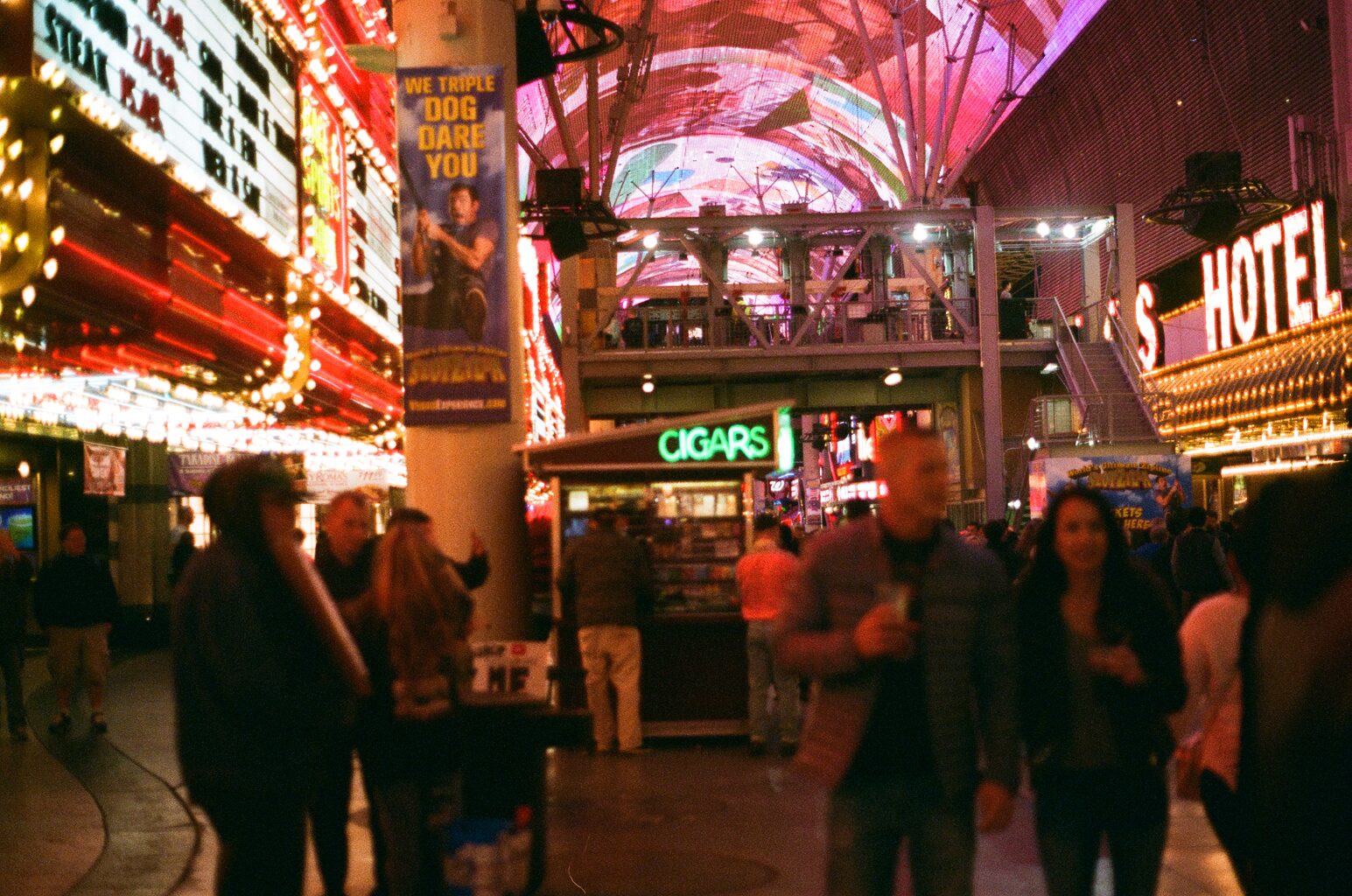“A little bit of this town goes a very long way.”
– Hunter S. Thompson
–
There are few more widely recognizable cities American cities than Las Vegas. Fewer cities have made such a lasting, universal imprint in our visual culture. Everyone knows what Las Vegas is and what it means as a city. What do we think about when we think about Las Vegas, after all? Don’t we all envision the exact same thing? A stretch of asphalted highway that cuts through an arid scenery, where bright lights, ostentatious hotels and replicas of world symbols of monuments abound, where people lose track of themselves and of their anyone think of Las Vegas and imagine it in any other way?
They say that what happens in Vegas stays in Vegas… But I’m just going to write about it anyway.
How did I end up there, you may ask? Well, interesting enough story (not really, but it provides some context). For our Winter film project, my Stanford colleague Dinesh and I have been collaborating on a documentary film (which will be finished soon enough!). For the project, we decided we wanted to film an ultramarathon – a race of over 50-miles, or anything longer than a marathon -; in my case, I was interested in understanding what are the poetics and the motivations that push people to become involved in such a “violent” activity, and to reflect on just what it is that they think about when they are running (Haruki Murakami’s book What I Talk About When I Talk About Running was definitely an inspiring starting point).
Going to Las Vegas ended up being a practical and logistical choice: the only ultramarathon that took place during the week we were allowed to film in took place in Henderson, Nevada. Henderson is a suburban town just outside of Las Vegas, one of those carefully planned and concocted towns of pre-fabricated condos and artificial gardens and lakes amidst the Mojave desert landscape; the seemingly perfect (and how absurd!) scenario for an endurance race.
We flew to Las Vegas on February 14th and were back in San Francisco on February 19th. The five days that we spent in Las Vegas were mostly spent planning and preparing for our shoot; we then had two days that we effectively spent shooting, and the rest of the time resting from the incredibly intense experience of shooting. Of all the time we spent in Nevada, I was only able to go to the actual Las Vegas once – the evening of the first day we spent there, I decided to take a cab to the center and wander around for a little while, thinking “if I’m here, and since I might never come back, I may as well see the sights”.
Mind you, I was not in the mood for gambling or drinking. I had also “conveniently” (or distractedly) left my passport at the house we had rented for the days we would spend there, so there was little more for me to do than wander around in awe yet simultaneously confirming my expectations about the place.
I have a feeling that that evening was enough – enough to get a sense of the city’s charm and purpose of existence. Much like Hunter S. Thompson said in the quote above – and he should know (Fear and Loathing in Las Vegas, anyone?) -, a little bit of this place serves you enough for a whole lot of time. And that’s just how I felt – as I walked around the streets of Las Vegas (first The Strip, which is the urban cacophony you most often find in the movies, and then in Fremont Street, the old part of the town where the oldest casinos area), I couldn’t have felt more like a fish out of water. I often times forget, during my daily livings and tribulations of existence, that I am in America – Stanford can be so overwhelming that you simply end up forgetting exactly where you are, and only do my travels and brief bursts of reality that happen when I leave the campus and go to San Francisco, or to any other place around Stanford, provide me brief reality check-ups.
But suddenly, and as Dinesh had warned me during our plane trip and after our arrival in Las Vegas, I was just about to see “the real America and real Americans”, the things I craved so much to see. And while Las Vegas is not the whole America – how can anything ever be a whole country? -, it certainly transported me back to that Hollywood imaginary that I had for long grown up with.
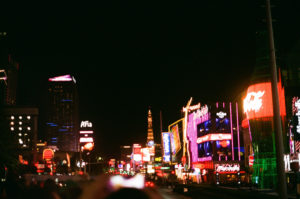
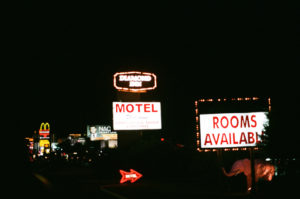
–
Las Vegas can be described in two expressions, and you can choose which ones fits your preference (or even choose both): Las Vegas, the Neon paradise // Las Vegas, where good sense comes to die.
Las Vegas is one of those mythical places that, I said, you grow up envisioning from “the movies”. It is a place that could seemingly only exist in America – and America, while I grew up, was simply “that far away land on the other side of the ocean”, where the word “freedom” is taken to such an extreme that there are whole cities that are built just in order to honor all desires and needs (regardless of how silly, unproductive or purely bizarre they may be). A city in the middle of the desert, a(n) (almost) literal, grotesque, urban oasis that sprang from nothing to house all excesses and vices, the cornerstone of capitalistic extravaganza.
The city’s streets are crowded with tourists – mostly Americans, some foreigners -, as well as by all kinds of characters one can easily imagine to find in a place like this. Yet for many, I was the one receiving looks, and I soon felt like I had become a “cooky character” – wandering around in my “weird clothes”, carrying a film camera around my neck, as I walked into a souvenir shop to buy some silly-looking postcards, I was asked for identification. Without my passport, I became nervous, and just handed the cashier my national ID card (the only thing I had with me at that moment). She glanced at it quickly and said “Wow, Portugal! Wow! That is so exotic”.
And then I come to realize just from how far I’ve really come, how far away from my “home” I really am and that, this time, it doesn’t matter what I actually think – in the land of excesses and delights, I am the odd one out. I am the fish out of water.
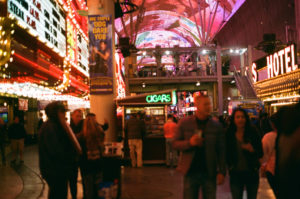
–
Then there’s the other Las Vegas, or better yet, the Mojave desert in which the city sits in and that is occasionally disrupted by the towering casinos, entertainment facilities and disproportionate billboards. Somewhere along the margins of this city exist plenty of other suburban paradises of recently build apartment complexes and man-drafted lakes out of drainage water. In these towns, the majestic and immense landscape of the Mojave imposes itself in the distance – no longer could the neons hide the natural beauty of that cinematographic landscape of the American West.
Dinesh endured with patience my obsession over the distant mountain that persisted for the three days that we spent shooting in the artificial lake park in Henderson, Nevada. In our footage, that mountain probably received way too much coverage – and I’m partly to blame for it. For me, the mountain was the ultimate symbol of the terrain that I always thought of when I thought of the Mojave desert, and though he would insist that there we plenty of better-looking and more imposing mountains in other states than that one – which I believe there are indeed -, this one came to symbolize my first trip to the “real America”, and it meant quite a lot than the bright lights and blaring music of Fremont Street.
As for the film? Hopefully you’ll be able to see it screen someday. But for now, it is done. Moving on to other marathons of my own.
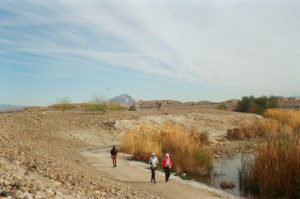
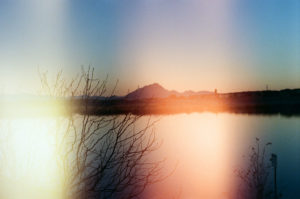
– Inês
